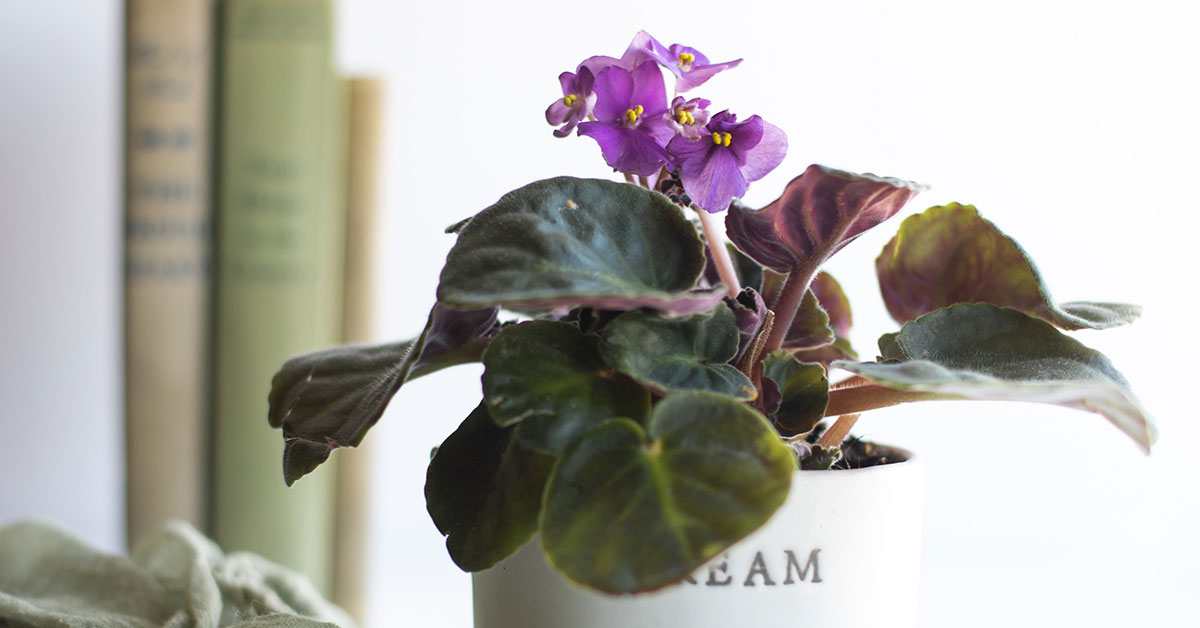African violets are beloved for their beautiful, delicate blooms and lush, deep green leaves. However, sometimes their leaves can start to curl and become unsightly. Curling leaves can be a sign that something is wrong with your African violet, and it’s important to identify and address the issue in order to keep your plant looking its best. We’ll discuss some of the common causes of curling leaves. As well as provide tips on how to prevent and correct this issue
What Are African Violets?
African violets are popular houseplants that are known for their beautiful, velvety flowers. They are easy to care for and require minimal effort to keep healthy and blooming. Growing African violets are a great way to brighten up any home or office. People enjoy the challenge of nurturing these plants and watching them bloom. African violets also make a great gift as they are aesthetically pleasing and can last for years with proper care. With their wide range of colors, shapes, and sizes, African violets are popular among gardeners and plant lovers alike.
Why Your African Violet Leaves Are Curling
African violets can be stunning, however, their leaves can sometimes curl. This can occur for a number of reasons, the most common of which is incorrect watering. If the soil is too wet, the leaves can absorb too much water and curl as a result. In addition, curling can also be caused by a lack of humidity, too much direct sunlight, or too much fertilizer. It’s important to identify the cause of the curling, as the solution can vary depending on the source. Too much water, for example, would require adjusting the watering schedule and using well-draining soil. Too little humidity can be countered by providing more moisture through misting or using a humidifier.
Preventing African Violet Leaves From Curling
African violets are beautiful and delicate plants that can add a cheerful pop of color to any home. However, the leaves of African violets can sometimes curl, which can be unattractive and unhealthy for the plant. To prevent this from happening, it is important to provide the plant with plenty of bright. Indirect light is ideal as well as keeping the soil moist, but not soggy.
It is also important to fertilize the plant every two to four weeks with a fertilizer specifically designed for African violets. African violets need plenty of humidity, so misting the leaves with water regularly can help them retain their shape and vigor. Finally, it is important to avoid drafts and sudden temperature changes, which can cause the leaves to curl.
Overwatering And Underwatering
When it comes to African violets, it is important to monitor the amount of water they receive. Too much water, also known as overwatering, can cause the leaves to curl and wilt, while too little water, or underwatering, can also cause the leaves to curl and wilt. To prevent this, it is best to water African violets when the soil is dry to the touch but not completely dry.
Always allow the excess water to drain away, and never allow the plant to sit in water for extended periods of time. It is also important to ensure that the pot has good drainage holes to prevent water from pooling around the roots. If you find that the leaves are curling or wilting, it is best to adjust your watering schedule accordingly.
African Violet Leaves Are Curling Due To Pests And Diseases
African violets are popular indoor plants that require special care to prevent pests and diseases that can cause their leaves to curl. The best way to prevent pests and diseases is to make sure that the plant is in the right environment. The soil should be kept moist but not soggy, and the temperature should be between 65 and 75 degrees Fahrenheit. The plant should also be placed in an area with indirect sunlight, as too much direct sunlight can cause the leaves to curl. Additionally, it is important to keep the leaves and soil free of debris, and water the plant from the bottom to keep fungal diseases at bay. It is important to inspect the plant regularly for any signs of pests and diseases.
African violets can be a target for pests, such as aphids, mealybugs, or spider mites. To prevent pests from attacking the leaves, it is important to regularly inspect the leaves for any signs of an infestation. If any pests are discovered, use a cotton swab dipped in rubbing alcohol to remove them. Additionally, keeping the leaves of the African violets clean will help deter any pests from taking up residence. The leaves should be washed with a mild soap and water solution and then rinsed with clear water. Eliminating any nearby sources of pests, such as old plant pots or compost, is also a good preventative measure. Finally, avoid overwatering the African violets, as this can create an environment that is more hospitable to pests.
How To Prune African Violets
To prune curling leaves, you should first identify which leaves are affected. Next, use sharp pruning shears to cut the affected leaves back to the base of the stem. Be sure to sterilize the shears with rubbing alcohol or a 10% bleach solution before and after use. This will help prevent the spread of any diseases. After pruning, you should check the plant for any other signs of distress. This includes yellowing or wilting leaves. Finally, make sure to water your African violet regularly and provide sufficient light in order to encourage healthy growth.













